Google’s first-gen in-house silicon, Google Tensor, was introduced earlier last year with the Pixel 6 series launch. Now, after almost a year, Google has unveiled the Google Tensor G2 chipset with the Pixel 7 series. The second-gen Google silicon is supposed to bring marginal improvements in CPU performance and significant gains in the GPU department. However, how well does the Google Tensor G2 stack up against the Qualcomm Snapdragon 8+ Gen 1 and Apple’s A16 Bionic? To find the answer, go through our comparison between the Google Tensor G2 vs Snapdragon 8+ Gen 1 vs A16 Bionic. We have discussed CPU, GPU, TPU (AI and ML), ISP, 5G modem, benchmark numbers, and more.
Google Tensor G2 vs Snapdragon 8+ Gen 1 vs A16 Bionic: An In-depth Comparison (2022)
In this comparison between the Google Tensor G2, Snapdragon 8+ Gen 1, and A16 Bionic, we have analyzed the CPU architecture, GPU performance, benchmark numbers, and more.
Tensor G2 vs Snapdragon 8+ Gen 1 vs A16 Bionic: Specifications
Here, we have mentioned the detailed specs sheet for the Google Tensor G2, Snapdragon 8+ Gen 1, and A16 Bionic chipset. Glance over it to get a rough idea about all three processors.
| Google Tensor | Snapdragon 8+ Gen 1 | A16 Bionic | |
|---|---|---|---|
| CPU | Octa-core CPU | Kryo CPU, Octa-core CPU | Hexa-core CPU, 16 billion transistors |
| CPU Cores | 2x 2.85GHz (Cortex-X1) 2x 2.35GHz (Cortex A78) 4x 1.8GHz (Cortex A55) | 1x 3.2GHz (Cortex-X2) 3x 2.5GHz (Cortex A710) 4x 1.8GHz (Cortex A510) | 2x High-performance cores 4x High-efficiency cores |
| Process Technology | Samsung’s 5nm process | TSMC’s 4nm process | TSMC's 4nm process |
| GPU | Mali G710 GPU | Adreno 730 GPU; Snapdragon Elite Gaming | Apple-designed 5-core GPU |
| Machine Learning and AI | Google Custom TPU | 7th-gen AI Engine; 3rd Gen Sensing Hub; 27TOPS | New 16-core Neural Engine; 17 TOPS |
| ISP | Google Custom ISP | 18-Bit ISP; Snapdragon Sight | Apple-designed New Image Signal Processor |
| Camera Capability | Cinematic Blur 4K 60FPS on all cameras 10-bit HDR support Active Stabilization | 3.2 Gigapixels per second, 240 12MP photos in one second | ProRAW photos at 48MP Photonic Engine Action Mode |
| Video Capability | 4K 60FPS recording Google HDRnet | 8K HDR, 18-bit RAW, Dedicated Bokeh Engine | 4K HDR Dolby Vision @ 60FPS Cinematic 4K@24FPS Action mode |
| Modem | Samsung G5300B modem | Qualcomm X65 5G Modem-RF, Up to 10 Gbps Peak Download | Qualcomm X65 5G Discrete Modem |
| WiFi Support | Wi-Fi 6E | Wi-Fi 6E | Wi-Fi 6 |
| Bluetooth | Bluetooth 5.2 | Bluetooth 5.3, LE | Bluetooth 5.3 |
Tensor G2 vs Snapdragon 8+ Gen 1 vs A16 Bionic: CPU
Beginning with the CPU, the Google Tensor G2 has not seen any significant changes compared to Google’s first in-house chipset, the OG Google Tensor. The CPU architecture is the same as last year’s SoC, which includes two Cortex-X1 cores, two Cortex-A78 cores (replaced A76), and four Cortex-A55 cores. The only difference with Tensor G2 is that the ARM Cortex-X1 core is clocked slightly higher at 2.85GHz instead of 2.80GHz and the Cortex-A78 core is clocked at 2.35GHz.
Moreover, the new Tensor G2 chip is developed on Samsung’s 5nm process node, which is the same as last year, Google confirmed to Android Authority. Note that Tensor G2 is not developed on the same 4nm process as its counterparts. And we already know that the first Tensor chip was not received well and saw numerous issues, including thermal throttling, heating, and sub-par battery life. So we will have to be skeptical about battery life and heating issues on the Pixel 7 series, which we can only confirm after testing the phone extensively so stay tuned with us.

In tandem, you’re getting almost an identical CPU on the Google Tensor G2, and the benchmark results (more on this below) also reflect the same trend. You don’t get the newer and improved Cortex-X2, A715, A710, or A510 core, which is quite disappointing.
If you compare Google Tensor G2’s CPU with Snapdragon 8+ Gen 1 and A16 Bionic, well, it doesn’t hold up at all. The SD 8+ Gen 1 packs the new Cortex-X2 core, which is clocked considerably higher at 3.2GHz. Apart from that, there are three A710 and four A510 cores, which are clocked at 2.5GHz and 1.8GHz respectively.
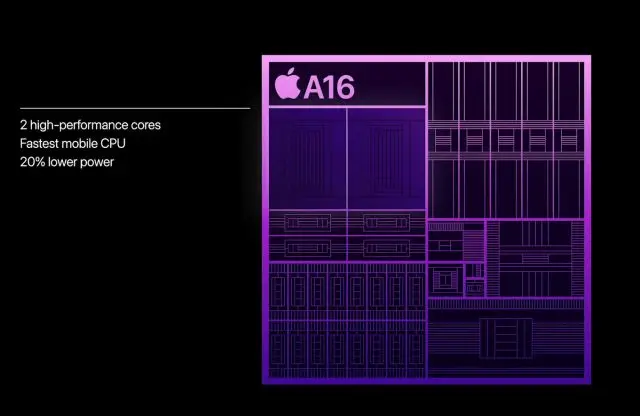
Apple’s A16 Bionic chipset, on the other hand, is altogether on another level. Instead of an octa-core architecture, it goes for a hexa-core cluster with two high-performance cores (“Everest” clocked at 3.46GHz) and four high-efficiency cores (“Sawtooth” clocked at 2.02GHz). Simply put, in terms of CPU performance, the Tensor G2 SoC is nowhere closer to either Qualcomm or Apple’s offering.
Tensor G2 vs Snapdragon 8+ Gen 1 vs A16 Bionic: GPU
Coming to the GPU, Google has indeed packed a newer and more power-efficient 7-core Mali G710 MP7 GPU on the Google Tensor G2. It’s said to bring a 20% performance improvement over the Mali G78 GPU used in last year’s Tensor chipset. At the same time, it consumes 20% less energy, which is great for thermal efficiency.
Hopefully, with the Tensor G2, we will see less thermal throttling, better heat dissipation, and sustained graphics performance on the new Pixel 7 series. Besides that, the GPU also offers 35% better performance in machine learning compared to the Mali G78 GPU.
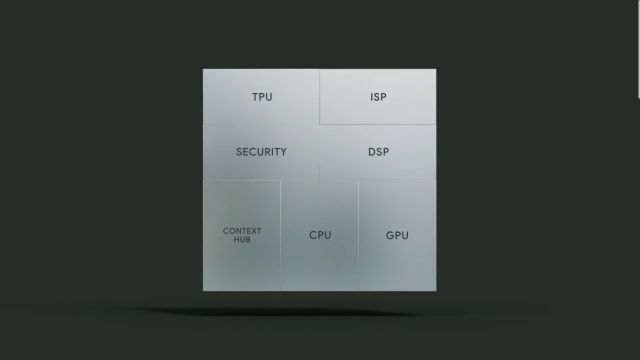
Note that the Mali G710 GPU can be configured starting from 7 to 16 cores, but Google has packed only 7 cores on the Tensor G2, perhaps to keep thermal efficiency in check. For your information, other phone manufacturers like Xiaomi and Asus have gone with a 10-core Mali-G710 MC10 setup.
Comparing the 7-core Mali G710 GPU on the Google Tensor G2 against Qualcomm and Apple’s offerings, well, Google is again trailing behind. In terms of power efficiency, the Mali G710 GPU is definitely more power-efficient than Snapdragon 8 Gen 1’s Adreno 730 GPU and comes close to A16 Bionic. However, due to the lower cores used on the Tensor G2, it can’t compete with either Qualcomm or Apple’s GPU. To give some perspective, the 10-core Mali G710 GPU scored around 160FPS in the GFXBench test, whereas Snapdragon 8 Gen 1 scored 175FPS and A15 Bionic peaked at 180FPS.

At least with the 10-core GPU, Google could have put up a decent fight against SD8+ Gen 1 and A16 Bionic. But it seems like Google is playing safe and does not want any kind of heating issues on the Pixel 7 series. To sum up, the GPU on the Tensor G2 is quite power-efficient and powerful, but due to lower cores, Google loses out to Qualcomm and Apple.
Adreno 730 GPU has not seen major performance improvement on the Snapdragon 8+ Gen 1 over the 8 Gen 1, except for power efficiency improvements. And the 5-core GPU on A16 Bionic is also the same as A15 Bionic, except for more memory bandwidth. In tandem, if Google chose to go with a higher 16-core GPU, it’s going to beat the GPU on the Snapdragon 8+ Gen 1 and may rival A15 Bionic’s GPU.
Tensor G2 vs Snapdragon 8+ Gen 1 vs A16 Bionic: Geekbench and AnTuTu Benchmark Numbers
Talking about benchmark numbers of Google Tensor G2, Snapdragon 8+ Gen 1, and A16 Bionic, let’s begin with Geekbench single-core and multi-core CPU tests. As you can see here, the CPU on the Google Tensor G2 is marginally better than last year’s Google Tensor (2021). And when compared with Snapdragon 8+ Gen 1 and A16 Bionic, it’s miles behind. In fact, the Google Tensor G2 is close to Snapdragon 888+ in terms of CPU performance.
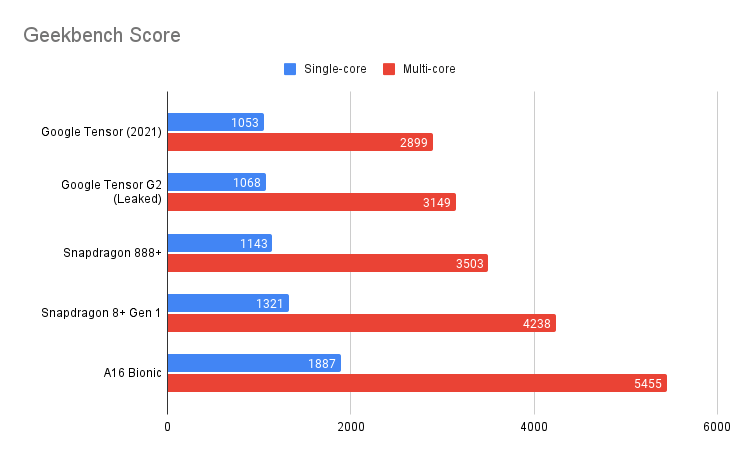
If we go by the recently leaked AnTuTu score of Google Tensor G2, Snapdragon 8+ Gen 1, and A16 Bionic, Google again disappoints with its latest silicon. The Tensor G2 chipset scores 801,116 in the AnTuTu test and is way behind SD8+ Gen 1 and A16 Bionic.

Tensor G2 vs Snapdragon 8+ Gen 1 vs A16 Bionic: ISP
While the Google Tensor G2 is behind the Snapdragon 8+ Gen 1 and Apple A16 Bionic in CPU performance and is promising in the GPU department, ISP is where Google shines. And that’s because it controls both the hardware and software verticals. Along with all the photo and video capabilities, the custom Google ISP offers cinematic blur for videos, 2x faster Night Sight photography, and 10-bit HDR support. You also get active stabilization using both hardware and software, along with 4K 60FPS shooting across all the cameras.
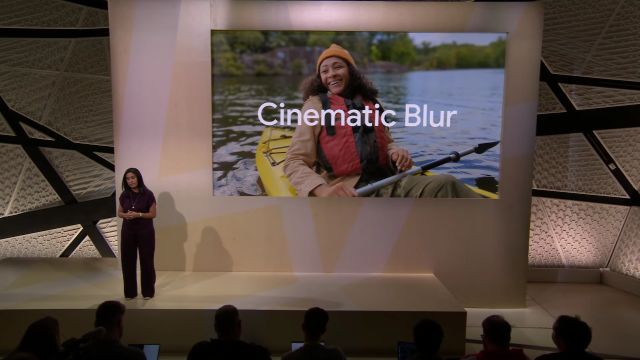
If we talk about the ISP on the Snapdragon 8+ Gen 1, well, it’s definitely more powerful and offers an 18-bit triple ISP architecture. It can capture 3.2 gigapixels per second and supports 8K HDR recording as well. The ISP on the A16 Bionic is also quite advanced and can perform 4 trillion operations per photo. It powers the new Photonic engine for generating sharper and rich images and offers Cinematic videos and Action mode to stabilize shaky videos.
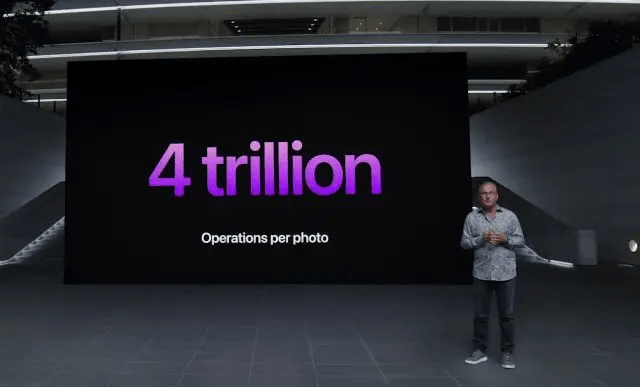
Overall, I would say all three ISPs are plenty powerful, but at the end of the day, it depends on the phone manufacturer on how to leverage these hardware capabilities. And it seems like Google is winning this game with new and exciting camera features that are meaningful to the user.
Tensor G2 vs Snapdragon 8+ Gen 1 vs A16 Bionic: AI and ML
In the AI and ML segment, Google is a leader in providing useful features on Pixel phones. And on the Tensor G2 chipset, Google has added a new TPU (Tensor Processing Unit) that can deliver state-of-the-art AI and personal intelligence features to your phone.

In the keynote address, Google said that machine learning runs up to 60% faster on the Tensor G2 chip with 20% more power efficiency. From speech recognition to translating conversations, voice assistance, Pixel Call Assist, Call Screen, Super Res Zoom, etc., you get all the AI-driven features on the Pixel lineup, thanks to its powerful TPU.
Qualcomm’s 7th-gen AI Engine on the Snapdragon 8+ Gen 1 is also powerful, and it can perform 27 trillion operations per second. That said, it depends on your phone manufacturer on how to provide smart and meaningful experiences by utilizing hardware prowess.

On the other hand, Apple’s new 16-core Neural Engine on the A16 Bionic can perform 17 trillion operations per second, which helps in computational photography, voice assistance, pixel-by-pixel analysis, speech recognition, etc. However, no other company comes close to Google in delivering smart and personalized experiences, so the Google Tensor G2 wins this round as well.
Tensor G2 vs Snapdragon 8+ Gen 1 vs A16 Bionic: Wireless Connectivity
The Google Tensor G2 chip features Samsung’s unannounced G5300B 5G modem, which supports both mmWave and sub-6GHz bands. However, there is very little information about the specifics of the modem and its peak throughput. If we go by the Pixel 7 product listing, it supports almost 22 5G bands, covering most of the NR frequency bands. Apart from that, it supports Bluetooth 5.2 and Wi-Fi 6E.

Moving to the Snapdragon 8+ Gen 1, it includes the in-house X65 5G modem, which offers a peak theoretical download speed of 10Gbps. In addition, the chipset brings support for Bluetooth 5.3 and LE standards. Finally, the A16 Bionic also features a discrete X65 5G modem from Qualcomm and supports Wi-Fi 6 and Bluetooth 5.3.
Overall, in terms of 5G and wireless connectivity, the Google Tensor G2 lags behind SD 8+ Gen 1 and A16 Bionic. Qualcomm is one of the leaders in the modem industry, and Samsung’s modems have not been able to catch up with the best in the industry. In fact, Samsung has decided that it’s only going to use Qualcomm’s X70 5G modem on the Galaxy S23 series, so you can catch the drift.
What’s Your Verdict on the Google Tensor G2?
So that was our in-depth comparison between the Google Tensor G2, Snapdragon 8+ Gen 1, and A16 Bionic. Except in the CPU and modem department, we believe that the Google Tensor G2 is a middle-of-the-road chipset that features a power-efficient GPU, impressive TPU (AI + ML), and a powerful ISP. Now, it is time to test how well Google has optimized the phone to handle intensive tasks under sustained load and if there are any thermal throttling or heating issues.
Anyway, that is all from us. But what do you think about the Google Tensor G2 chipset? Do let us know in the comment section below. Also, head to our comparison between the A16 Bionic and Snapdragon 8+ Gen 1 to learn more about the performance difference between the two flagship SoCs.













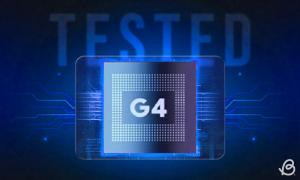




Tensor is just a rebadged Exynos.
Remember, Samsung no longer uses Exynos chips for its flagship phones. Did Samsung suddenly stopped making Exynos chips? No… it found the useful (idiot) customer in Google who can insist that benchmarks aren’t everything, and many people will believe that.
Regarding Google’s tensor g2 which is an in-house made chip assisted by Samsung is a promising tactic, however this strategy by google is new and in it’s infancy stages thus cannot really compete with apple who’s been doing this much longer so it’s only fitting that Apple’s a16 bionic chip is the superior chip by far. Over time though things may get interesting if google continues this strategy by coming out with tensor chips g3, g4, g5 and so forth. But even if google takes that path, apple will also be coming out with bionic chips a17, a18, a19 and so forth. So with that being said, the question is how much google cuts the gap vs apple over time.
g3 vs a17, g4 vs a18, g5 vs a19, and so forth.
This is very interesting and only time will tell if google can reduce the big deficit it has when comparing their g2 chip to Apple’s a16 chip.
The pixel 5 used a snapdragon 765G and there was nothing wrong with everyday performance. The Tensor soc is obviously designed the way it is for a reason and yes there were teething problems with the original but that’s to be expected, nobody gets it right the first time. So far with my Pixel 7 things are pretty good.
Tensor G1 is a joy to use day to day. I would have preferred that Google update the entire SOC, but even with media editing, I have never run into a circumstance where I thought the Tensor didn’t have enough juice. IMO I would feel the same way about the Snapdragon 778, which is to say, hardware has outpaced any software that isn’t for mobile gaming software by at least a couple years. If the updated modem is more efficient and stable out of the box, everything else is icing on the cake!
First of the CPU and GPU used shouldn’t be what bothers you the most but rather a better and longer batter life with less heat. With all those powers Apple have on their phone I still can’t play any ps4 games with it which is a waste…Google should keep playing their game safe and give us upfront software tricks and new Ai features. Pixel 4xl could literally do everything u want a phone to do and play any kind of game extra fps and 2sec difference loading times can’t make u feel awesome but having video cinematic blur does.
If you want super fast phones for gaming then pack ur load and go, asus would gladly welcome you. Stop forcing Google to become super fast like Apple and just appreciates all the smart things and how helpful the phone can be
Well, in my opinion, I think Google has got the correct approach towards its SOC. Its focuses on what actually matters to the consumer, I.e. The User Experience. Don’t get me wrong, all the power with other top-of-the-line SOCs like 8+ Gen 1, A16, Dimensity 9000 etc is all necessary, but lets be honest, who buys a phone to run the benchmarks all the time? Google Strikes the correct balance between Powe and User Experience even if it mean being outdated on paper.
I agree to some extent, but having a phone that does not heat while offering better battery life is also about providing a good user experience. We know that Cortex-X1 is not just old but also consumes more power and can increase the device temperature considerably. Similar is the case with A78 and A55 when you have much better options: A710 (30% power efficient) and A510 (20% power efficient). You just can’t fine-tune and manage old and power-hungry hardware with software tricks like Extreme Power Saver mode and AI-driven features. Just pick the right hardware, like the rest of the smartphone players, and act like a silicon company when you have chosen to enter the game.
Then why the high price? If you use cheaper components you should have lower prices to win costumers.. not to fool them!
Pixel suffers with network issues for most users but Google seems to be oblivious. All I want them to focus on the basics & let the AI & ML take over – not the other way round.
Agreed. When Samsung is going with Qualcomm’s modem, Google should have also picked the X65 modem from QC.